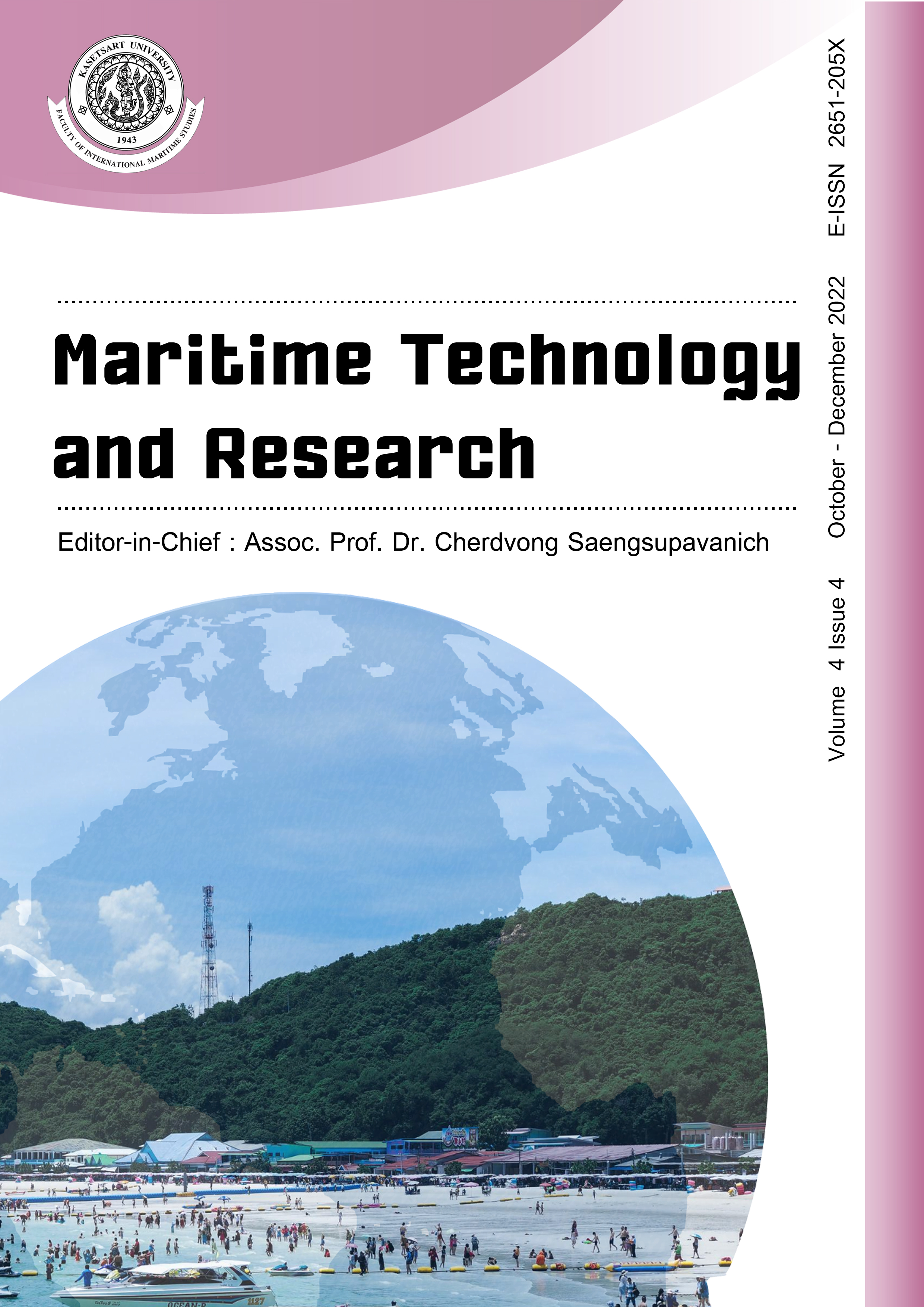Decision-making method for multi-ship collision avoidance based on improved extensive game model
DOI:
https://doi.org/10.33175/mtr.2022.257920Keywords:
Multi-ship collision avoidance, Improved extensive game model, Velocity obstacle, Action setAbstract
In the case of multi-ship encounter situations, most collision accidents are caused by not having timely and coordinated collision avoidance behaviors. Therefore, it is necessary to introduce an automatic collision avoidance method in the process of collision avoidance to quickly generate multi-ship collision avoidance decisions based on encounter situations. Multi-ship collision avoidance is a dynamic game used among officers under situations of multi-ship encounters. Considering the defects of the classic extensive game method in ship collision avoidance decision-making, the improved extensive game method is proposed, based on the velocity obstacle method. The feasible region of velocity is taken as the optional action range of the game to narrow down the action set. The simulation results show that the proposed method can effectively transform the multi-ship collision avoidance game problem into a 2-ship collision avoidance game problem, reduce the optional action range of a collision avoidance action set, and improve decision-making speed, while ensuring the safety of multi-ship navigation.
------------------------------------------------------------------------------
Cite this article: Tu, Y., Xiong, Y., Mou, J. (2022). Decision-making method for multi-ship collision avoidance based on improved extensive game model. Maritime Technology and Research, 4(4), 257920. https://doi.org/10.33175/mtr.2022.257920
------------------------------------------------------------------------------
References
Lisowski, J. (2004). Multi-step matrix game with the risk of ship collision. Risk Analysis IV: Simulation and Hazard Mitigation, 77, 669-680. https://doi.org/10.2495/RISK040611
Lisowski, J. (2007). The dynamic game models of safe navigation. International Journal on Marine Navigation and Safety of Sea Transportation, 1(1), 11-18.
Lisowski, J. (2008a). Sensitivity of safe game ship control. In Proceedings of the 16th Mediterranean Conference on Control and Automation Congress Centre, Ajaccio, France. https://doi.org/10.1109/MED.2008.4601979
Lisowski, J. (2008b). Optimal and game ship control algorithms for avoiding collisions at sea. Risk Analysis VI: Computer Simulation Risk Analysis and Hazard Mitigation, 39, 525-534. https://doi.org/10.2495/RISK080511
Lisowski, J. (2010). Sensitivity of safe game ship control on base information from ARPA radar: Radar technology (pp. 61-86). Croatia: Tech. https://doi.org/10.5772/7174
Lisowski, J. (2012). Game control methods in avoidance of ships collisions. Polish Maritime Research, 19(S1), 3-10. https://doi.org/10.2478/v10012-012-0016-4
Lisowski, J. (2013). Sensitivity of computer support game algorithms of safe ship control. International Journal of Applied Mathematics and Computer Science, 23(2), 439-446. https://doi.org/10.2478/amcs-2013-0033
Ouyang, X., Zhi, Y., Wang, T., Wu, B., & Wang, Y. (2020). An extensive form game theory based multi-ship collision avoidance scheme (in Chinese). China Safety Science Journal, 30(1), 128-135. https://doi.org/10.16265/j.cnki.issn1003-3033.2020.01.020
Szlapczynski, R. (2011). Evolutionary sets of safe ship trajectories: A new approach to collision avoidance. Journal of Navigation, 64(1), 169-181. https://doi.org/10.1017/S0373463310000238
Szlapczynski, R. (2012). Evolutionary approach to ship’s trajectory planning within traffic separation schemes. Polish Maritime Research, 19(1), 11-20. https://doi.org/10.2478/v10012-012-0002-x
Szlapczynski, R. (2013). Evolutionary sets of safe ship trajectories within traffic separation schemes. Journal of Navigation, 66(1), 65-81. https://doi.org/10.1017/S0373463312000422
Szlapczynski, R. (2015). Evolutionary planning of safe ship tracks in restricted visibility. Journal of Navigation, 68(1), 39-51. https://doi.org/10.1017/S0373463314000587
Wang, G. (2014). Modeling and simulation of ship collision avoidance decision-making system based on extensive game theory (in Chinese). Dalian, China: Dalian Maritime University.
Zhang, M., & Shi, C. (2007). Vessel collision avoidance using differential games in close quarter situation (in Chinese). Journal of Shanghai Maritime University, 28(1), 137-142. https://doi.org/10.3969/j.issn.1672-9498.2007.01.028
Downloads
Published
Issue
Section
License
Copyright (c) 2022 Maritime Technology and Research

This work is licensed under a Creative Commons Attribution-NonCommercial-NoDerivatives 4.0 International License.
Copyright: CC BY-NC-ND 4.0








